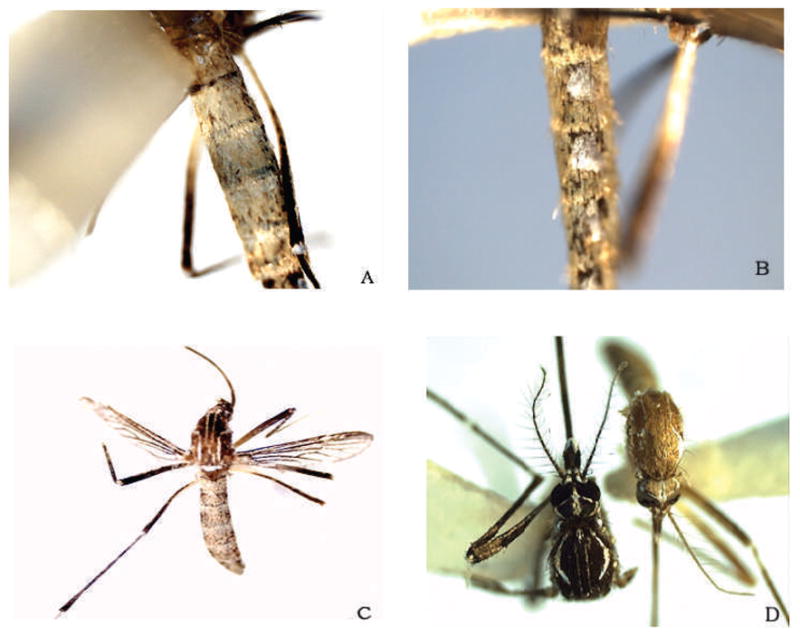Fig. 1.

Reared Aedes aegypti from northern Antigua. (A) Specimen 1, dorsal view of the abdomen with dull white to gold scales. Portions of the dark cuticle can be seen through the colorless scales. (B) Specimen 1, lateral view of the abdomen with normal silver-white spots surrounded by dull white and gold scales. (C) Specimen 2, similar abdominal scale color to specimen 1, pale scales are less dense in distribution. (D) (left) Type form reared from field-collected egg (Bradenton, FL) with dark occipital and mesonotal scales compared to (right) specimen 3 with narrow, gold mesonotal scales that partially obscure the centrad lyre markings, and occipital scales are bronze.
